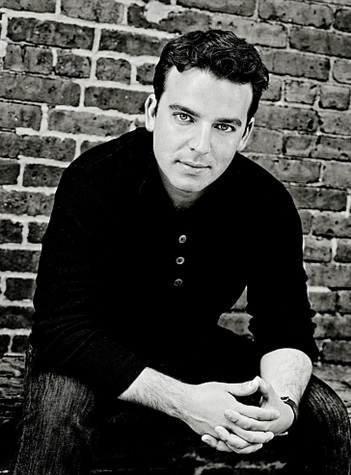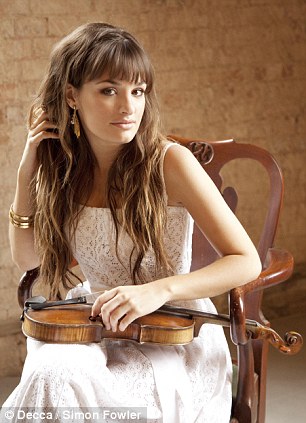Gaffigan, Benedetti and New World serve up two rarities with mixed results
The three works that comprised the menu for the New World Symphony’s concert Saturday night at the New World Center had little in common except for one unique artistic aspect. Each was the work of a composer with a highly individualistic voice that would be difficult to mistake for that of any other creative artist.
Guest conductor James Gaffigan led scores by Sibelius, Szymanowski and Copland, two of which most of the musicians on stage were probably playing for the first time.
Sibelius’ Symphony No. 4 in A minor is the darkest, most pessimistic and least often performed of the Finnish master’s seven symphonies. The symphony opens uncharacteristically with a slow movement. Initial chords that seem to come from some deep abyss give way to a haunting but spare theme from the solo cello. Storm clouds then gather in the string and brass interjections and big climaxes.
Gaffigan, chief conductor of the Lucerne Symphony, is a polished but uneven interpreter. It took two movements for the performance of the symphony to find its footing. He kept a steady hand on the opening movement’s pulse and sketched the music’s broad gestures. Still the performance often emerged as more dutiful than inspired with the music failing to take flight. Likewise his phrasing in the second movement Scherzo was too blunt with the string figurations needing greater lightness and urgency. Gaffigan’s deliberate approach brought little contrast between the initial lively themes and the more somber material that follows.
The performance finally came together in the intense third movement. Much of the Largo’s bleak aura came through with Gaffigan drawing string sonority of tonal depth. Gathering momentum, the thematic fragments coalesced into an intense threnody.
Outstanding solos from oboist Kristin Kall and flutist Masha Popova highlighted the strong all around ensemble effort. Gaffigan maintained a sense of tension in the final Allegro. The typically Sibelian principal melody that opens the movement turns into near chaos before the somber ending, which was effectively managed.
Nicola Benedetti was the soloist in Karol Szymanowski’s Violin Concerto No. 2. Completed in 1933, the concerto was one of the Polish composer’s final works. It is a real tour de force for the soloist and a terrific score. Combining elements of the chromaticism of late romantic music with colors of impressionism and the lush palette of early Stravinsky, Szymanowski devised a musical language all his own. His works deserve more frequent hearings and all credit to Benedetti for programming Szymanowski’s concerto rather than yet another traversal of the familiar Mendelssohn or Tchaikovsky warhorses.
That said, Benedetti can be a frustrating performer. The Scottish violinist can indeed tackle the score’s myriad virtuosic demands but her technique is often less than pristine. Right from the violin’s opening statement, her tone sounded muddy rather than rich, turning harsh in the instrument’s highest reaches. Benedetti exhibited an affinity for the score’s allusion to gypsy fiddling and seemed to grasp the work’s more poetic imagery but lacked the necessary polish. The cadenza that divides the concerto’s two sections, written by violinist Pawel Kochanski, was accurately assayed but wiry in tone. She was more at home in the vigorous finale where speed counted more than subtlety. Despite overpowering Benedetti at times, Gaffigan drew out the clashing harmonic layers of Szymanowski’s orchestral lines.
The 1945 orchestral version of Aaron Copland’s Appalachian Spring was the program’s lone familiar offering and displayed the New World players at their best. Gaffigan captured the authentic Copland Americana sound. Rhythms were crisp and the slow sections channeled the inherent nostalgia without turning maudlin. Unison strings played with striking clarity in the barn dance like episode. Clarinet and oboe solos launched the Shaker melody “Simple Gifts” and the full orchestral statement of the familiar tune was stirring. Gaffigan kept the tempo moving and fluid in the final chorale theme. Chloe Tula’s harp emerged finely transparent at the quiet conclusion.
The New World Symphony repeats the program 2 p.m. Sunday at the New World Center in Miami Beach. nws.edu 305-673-3331
Posted in Performances
Leave a Comment
Sun Dec 3, 2017
at 12:52 pm
No Comments







